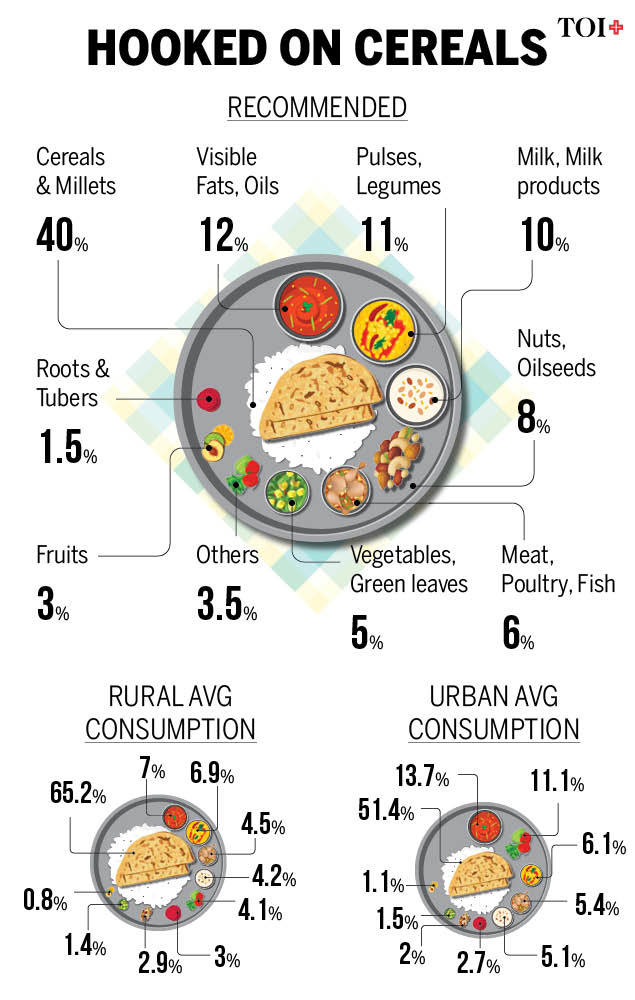Dietary-/ Eating-/ Food- habits: India
This is a collection of articles archived for the excellence of their content. |
‘What India eats’
As in 2019
October 12, 2020: The Times of India

From: October 12, 2020: The Times of India
A healthy diet is the first line of defence against disease, but while most find it hard to stick to a balanced diet, nutritional deficiencies are especially stark in India, says a survey by Indian Council of Medical Research-National Institute of Nutrition (ICMR-NIN). Missing out on key foods can lead to diseases like diabetes or heart disease, which are big risk factors for Covid.
ICMR-NIN recommends a 2,000-calorie diet for adults, and the actual intake is 1,943 calories in urban areas across the country and 2,081 calories in the rural areas. But these calorifically adequate diets actually conceal major deficiencies, says the report, which presents the first-ever break-up of the energy Indians derive from different food groups.
DIET AFFECTS HEALTH
The urban North has high obesity and abdominal obesity rates that match its high fat intake. Rural parts of central India, where cereal use far exceeds recommended levels, has the highest prevalence of chronic energy deficiency (CED). While the report says its recommendation does not represent a “therapeutic diet”, consumption of foods at prescribed levels and regular physical activity can boost the immune system and reduce risk of illness.
NORTHEAST TOPS IN CALORIE COUNT
Beyond their over-dependence on cereals, diets across India reflect great variety. Each region relies on certain foods more than the others. Calorie intake also varies by region, from 2,909 calories in the Northeast to 1,723 calories in the urban areas of North India. Data not given for rural consumption in North and Northeast
MORE FAT IN THE NORTH, PROTEIN IN SOUTH, NORTHEAST
Here’s how urban diets look in the different regions of India for the six key food groups that make up more than 80%, or four- fifths, of the recommended daily mix.
Cereals
Average diets in urban North India are the closest to the recommended level for cereals. Urban areas in both the East and NE get close to 60% of their daily energy from cereals
Meat
Pulses and legumes, and meat, poultry and fish are interchangeable in diets and together should make up 17% of total energy intake
Milk
Indian diets crimp on milk and milk products, too, with East and NE most deficient
Pulses
More than 10% of daily energy should come from pulses and legumes, but most diets are lacking in dals and beans. The Northeast is better than the other regions in this respect
Veggies For a country known to love its veggies, their low consumption is surprising. Eastern India fares best among regions
Fats The urban North has the highest fat intake while South has the least
Source: 'What India Eats', report by ICMR-National Institute of Nutrition